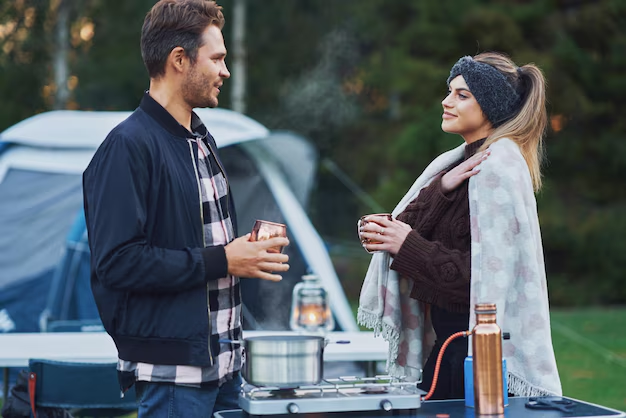Clever Ways to Keep Food Cold Without a Refrigerator
Imagine being on a camping trip, living off-grid, or suddenly finding yourself without a working refrigerator. Keeping your food cold might seem challenging, but it's far from impossible. There are several effective methods to ensure your perishables remain fresh. Whether you're preparing for an adventure or coping with a sudden power outage, understanding how to keep food cold without a refrigerator is an invaluable skill. Let's explore these innovative solutions that make cool storage a breeze!
🌞 Utilizing Nature's Cooling Methods
Harnessing Earth’s Insulation
Root Cellars: A Classic Approach
Have you ever wondered how people preserved their harvest before the advent of the refrigerator? Root cellars have long been used to extend the life of fresh produce. By storing food underground where temperatures are naturally cooler and more stable, it creates an excellent environment for storage.
- DIY Tips: If you don’t have a root cellar, you can create a mini version by digging a hole and using a covered container to shield your food.
Stream and River Cooling
If you're near a body of running water, this method dates back centuries and remains effective. By submerging sealed containers in a stream or river, you can benefit from the natural cooling effect of flowing water.
- Precautionary Note: Ensure your food containers are waterproof and secure to prevent contamination or loss.
Elevation and Shade Benefits
Taking Advantage of Cool Evening Air
Cool air sinks, so placing food in a shaded, elevated place during the day, followed by exposure to cooler night temperatures, can substantially lower the temperature of your perishables. Hanging baskets or elevated platforms under tree shade can be particularly effective.
- Pro Tip: Remember to bring your food down before the sun rises to avoid the warming effects of direct sunlight.
❄️ Ice and Ice-based Solutions
Building a Makeshift Ice Box
Creating an ice box is a straightforward yet efficient way to keep food cold. By using a box with good insulation properties and packing it with ice packs or frozen water bottles, your food can stay cool for longer.
- Material Choices: Old coolers, wooden crates with insulation, or even Styrofoam boxes work well.
Salt as an Ice-Enhancer
Salt lowers the freezing point of water, allowing your homemade ice box to stay colder for longer. Simply add some salt to the water before freezing it.
- Combo Tip: Use a layer of salted ice at the bottom and sealed food containers on top to maximize cold retention.
🌬️ Simple DIY Cooling Systems
Creating an Evaporative Cooler
Desert Fridge: The Pot-in-Pot Method
The pot-in-pot method, also known as a Zeer pot, uses the principles of evaporation to maintain cool temperatures. Combine two clay pots, one inside the other, with sand between them. Keep the sand moist; as water evaporates, it cools the inner pot.
- Interesting Fact: This method is widely used in arid regions to preserve perishable items effectively.
The Wet Cloth Technique
Wrapping food items with damp cloths can significantly cool them via evaporation. Hanging these wrapped items in breezy areas accelerates the process.
- Easy Hack: Just like the desert fridge, rewet the cloths regularly to maintain effective cooling.
🌱 Leveraging Modern Alternatives
Solar Refrigeration Solutions
Solar-powered coolers are becoming both accessible and affordable. These units can keep your food cold using renewable energy, making them ideal for off-grid scenarios.
- Cost Efficiency: Monitor the solar cooler market for budget-friendly yet efficient options that suit your needs.
Insulated Food Storage Bins
Investing in modern, cost-efficient insulated storage bins can provide an excellent alternative for keeping items cool. They use advanced materials that retain temperature without the need for electricity.
- Practical Use: Pair these bins with cold packs or ice for best results.
🔄 Rotating and Monitoring Food Supplies
Smart Food Selection
The types of food you choose can impact how well they keep. Non-perishables or items that naturally last longer at room temperature are strategic choices when refrigeration isn't an option.
- Examples Include: Dried goods, hard cheeses, and certain root vegetables like potatoes and carrots.
Routine Check and Rotation
Having a routine to check and rotate your food stores not only helps in maintaining freshness but also in reducing waste. Use older items first and regularly assess storage conditions.
- Labeling System: Mark packaged items with storage dates so you can easily keep track of freshness.
Summary of Practical Tips
Here’s a handy summary to keep your food cold without a refrigerator:
- 🌍 Nature's Help: Leverage root cellars, streams, and natural shade.
- ❄️ Ice Hacks: Build ice boxes with salt for enhanced chilling.
- 🏺 Evaporative Techniques: Try the pot-in-pot method and use damp cloths.
- 🌞 Modern Tech: Consider solar coolers and insulated storage.
- 💡 Proactive Management: Select resilient foods, check supplies regularly.
By understanding these diverse methods, you’re not just surviving without a refrigerator—you’re thriving! These strategies empower you to handle any situation with confidence. Whether savoring fresh food during a camping adventure or managing a power outage, keeping your cool has never been easier.
